Physical Address
304 North Cardinal St.
Dorchester Center, MA 02124
| Patient History | |
|---|---|
| Questions |
|
| Pain Location |
|
| Physical Examination | |
| Pain Provocation Tests |
|
| Motion Assessment and Static Palpation |
|
| Interventions |
|
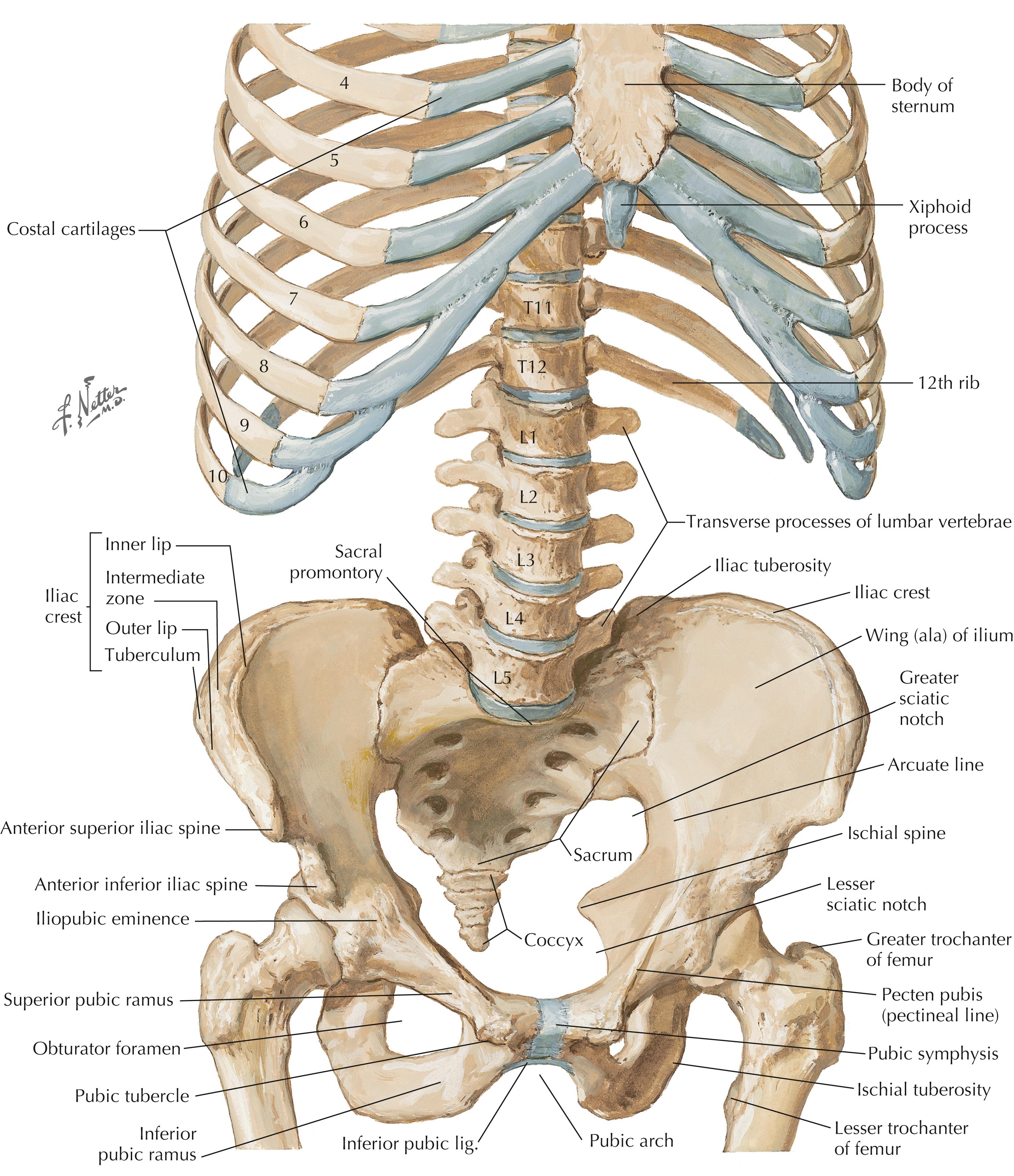
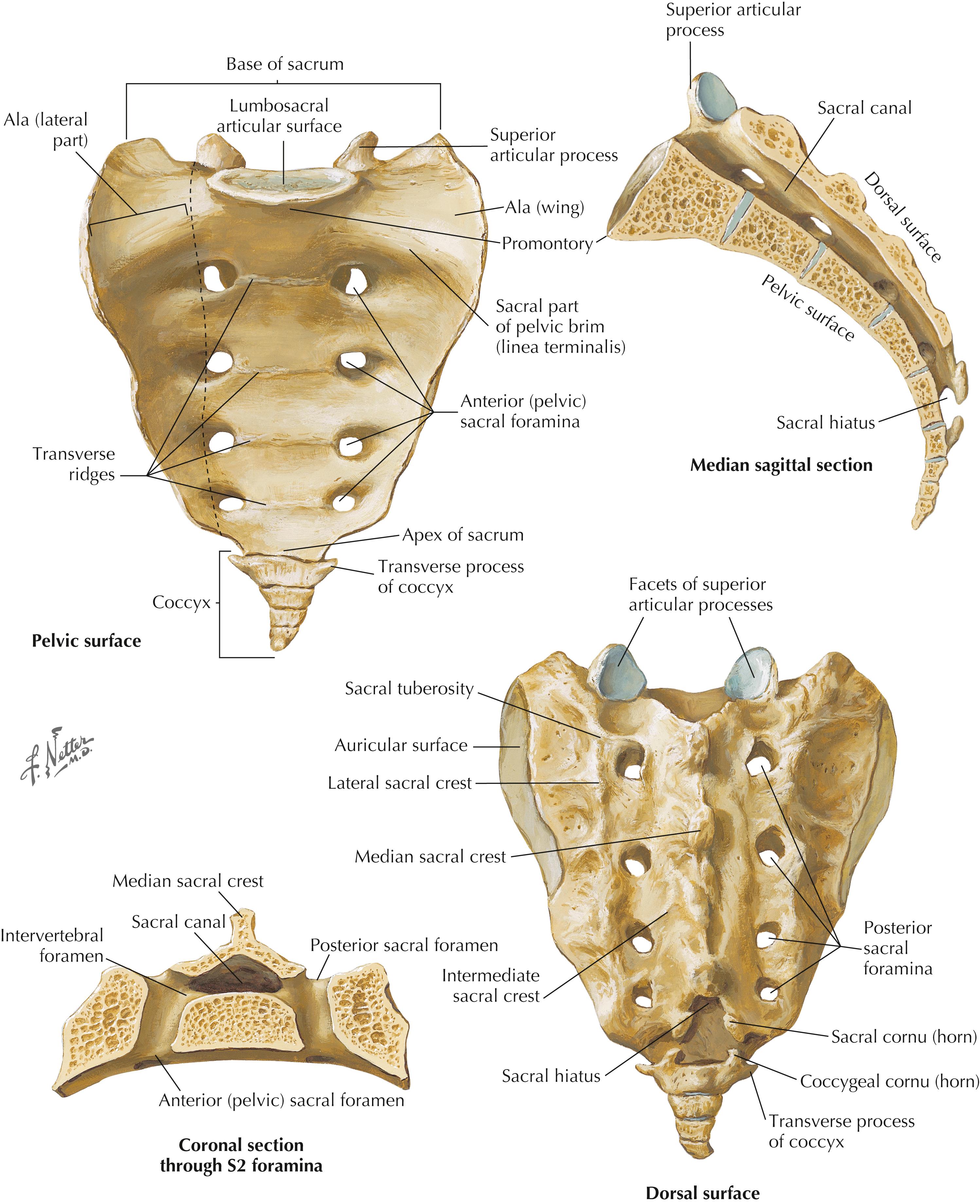
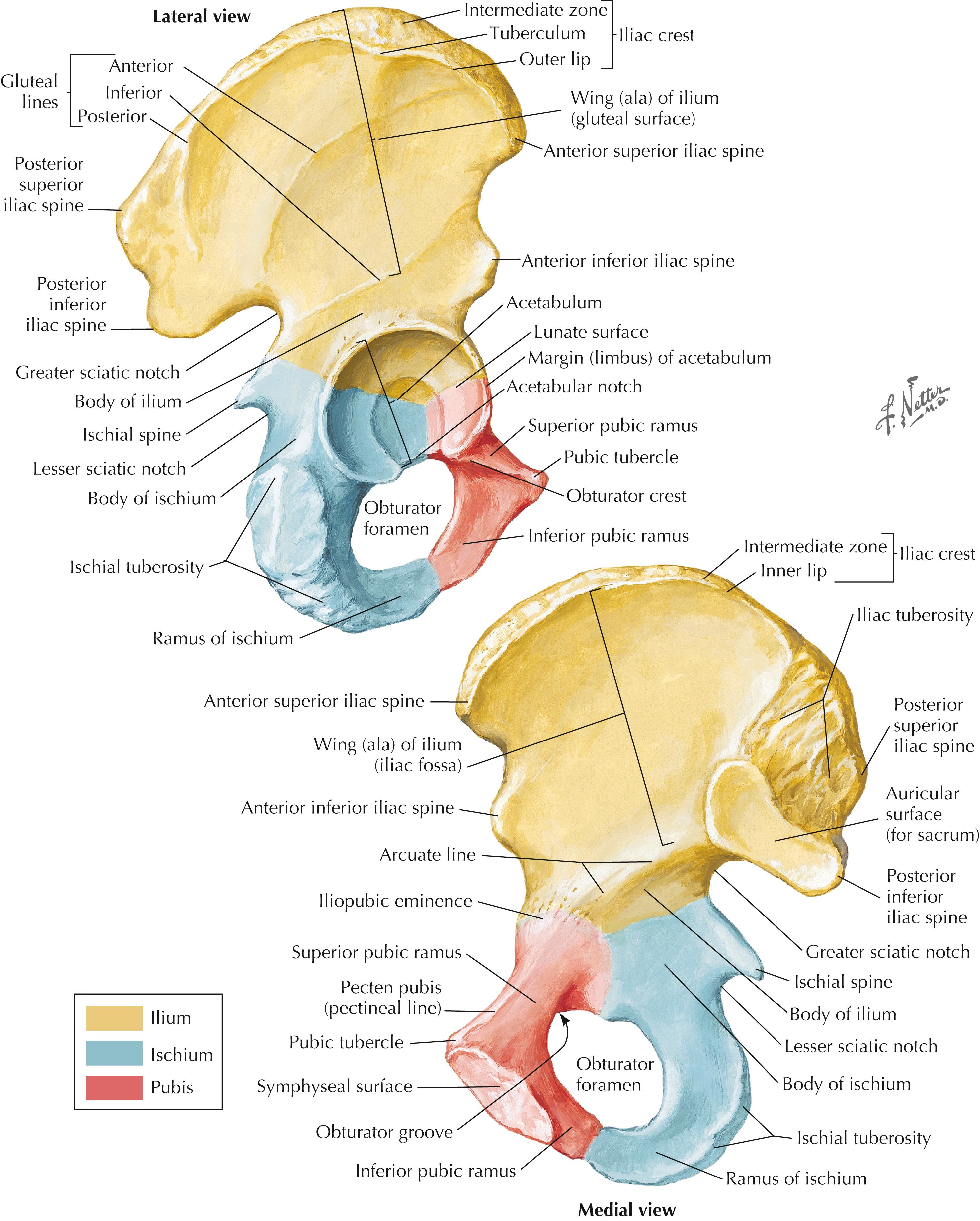
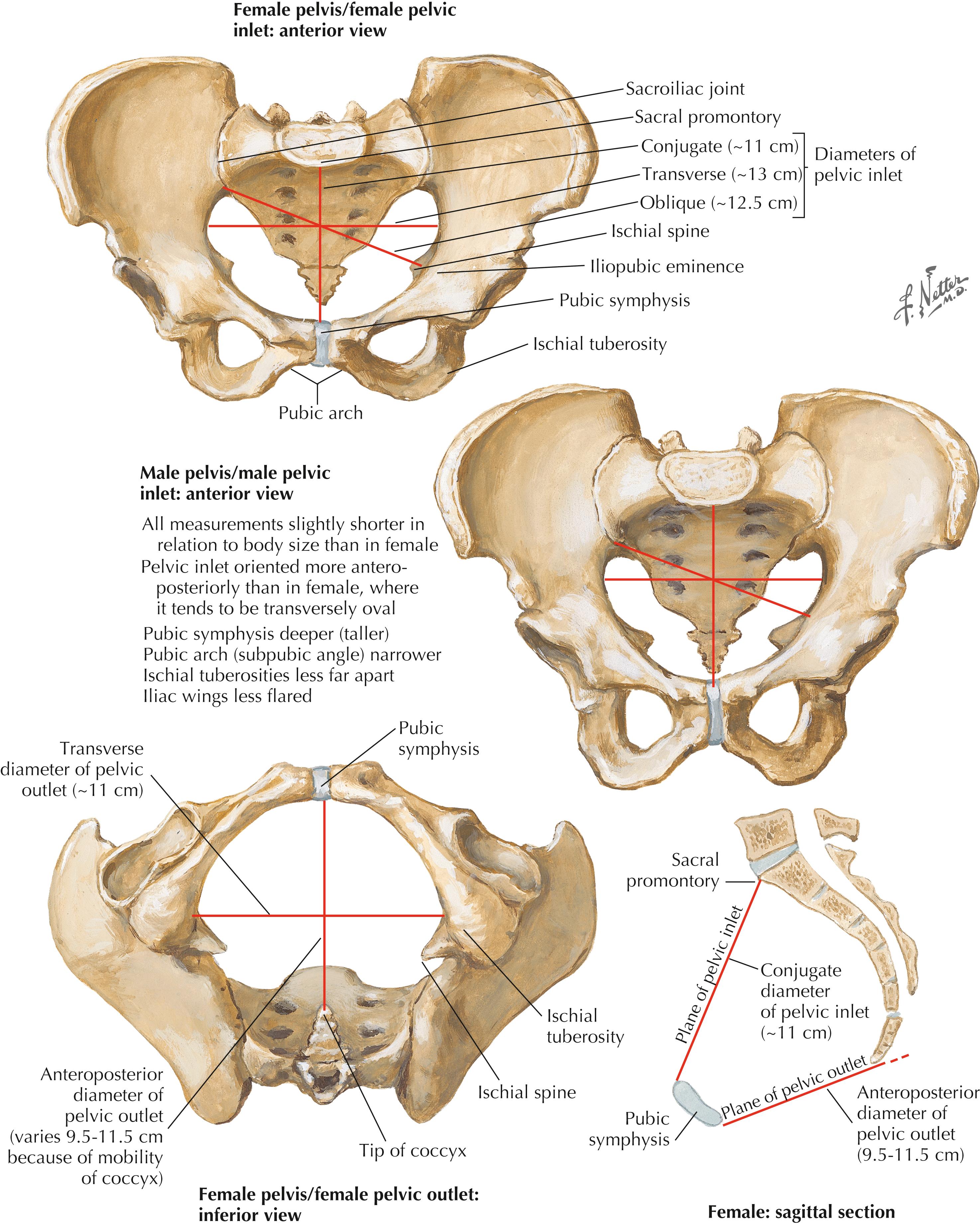
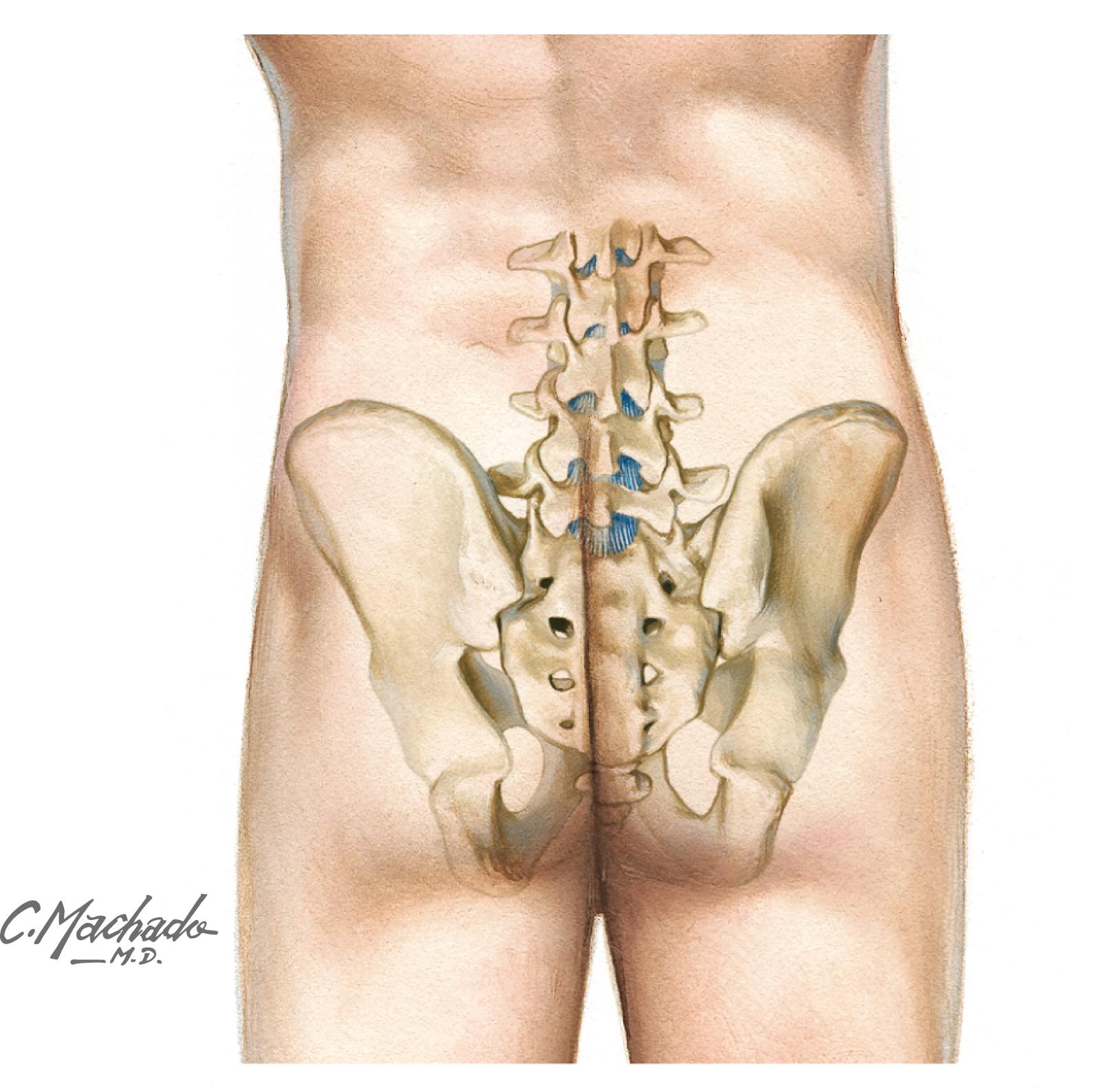
| Region | Joint | Type and Classification | Closed Packed Position | Capsular Pattern |
|---|---|---|---|---|
| Sacroiliac region | Sacroiliac joint | Plane synovial | Has not been described | Considered a capsular pattern if pain is provoked when joints are stressed |
| Lumbosacral region | Apophyseal joints | Plane synovial | Extension | Equal limitations of side-bending, flexion, and extension |
| Intervertebral joints | Amphiarthrodial | Not applicable | Not applicable |
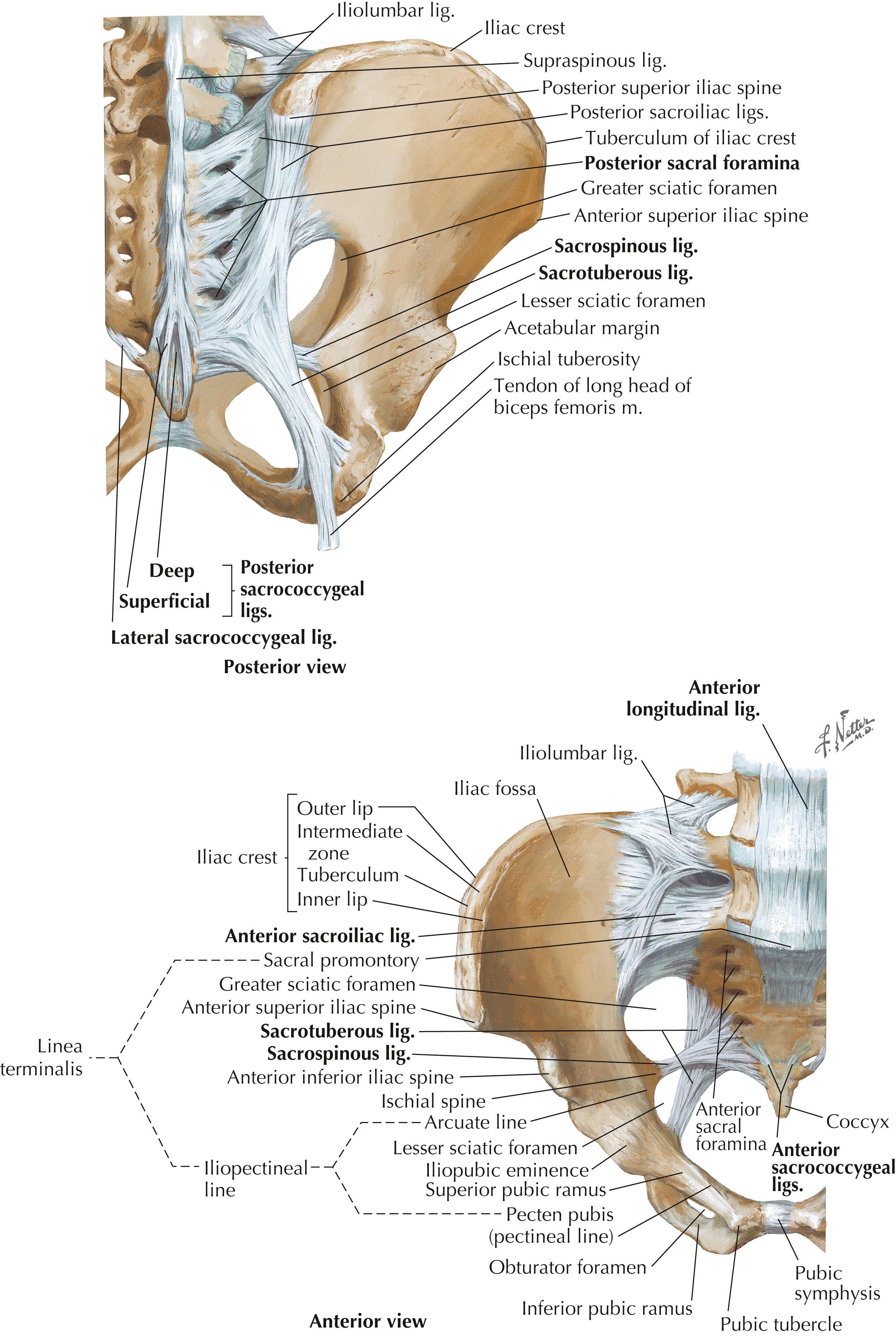
| Sacroiliac Region Ligaments | Attachment | Function |
|---|---|---|
| Posterior sacroiliac | Iliac crest to tubercles of S1-S4 | Limits movement of sacrum on iliac bones |
| Anterior sacroiliac | Anterosuperior aspect of sacrum to anterior ala of ilium | Limits movement of sacrum on iliac bones |
| Sacrospinous | Inferior lateral border of sacrum to ischial spine | Limits gliding and rotary movement of sacrum on iliac bones |
| Sacrotuberous | Middle lateral border of sacrum to ischial tuberosity | Limits gliding and rotary movement of sacrum on iliac bones |
| Posterior sacrococcygeal | Posterior aspect of inferior sacrum to posterior aspect of coccyx | Reinforces sacrococcygeal joint |
| Anterior sacrococcygeal | Anterior aspect of inferior sacrum to anterior aspect of coccyx | Reinforces sacrococcygeal joint |
| Lateral sacrococcygeal | Lateral aspect of inferior sacrum to lateral aspect of coccyx | Reinforces sacrococcygeal joint |
| Anterior longitudinal | Extends from anterior sacrum to anterior tubercle of C1. Connects anterolateral vertebral bodies and discs | Maintains stability of vertebral body joints and prevents hyperextension of vertebral column |
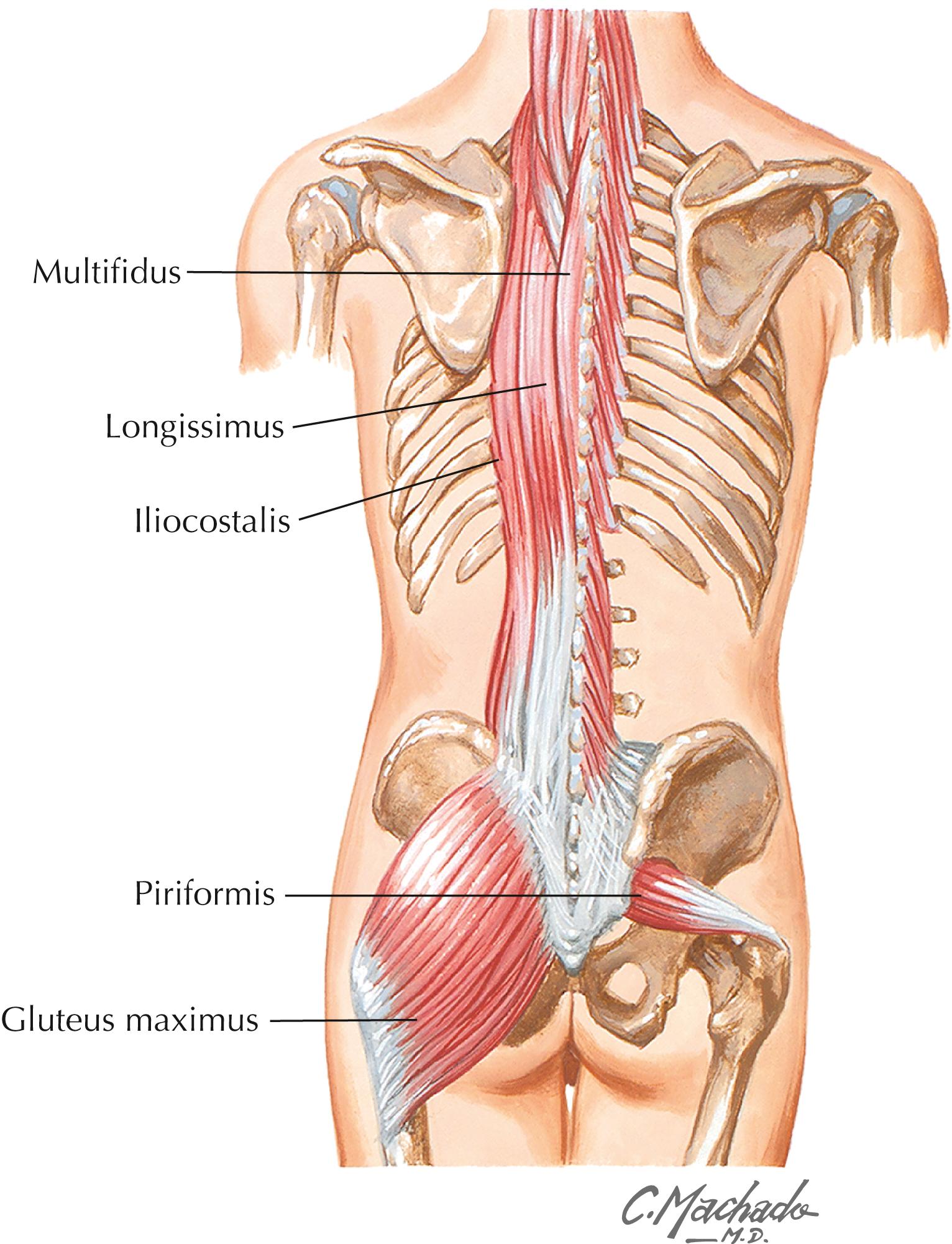
| Sacroiliac Region Muscles | Proximal Attachment | Distal Attachment | Nerve and Segmental Level | Action |
|---|---|---|---|---|
| Gluteus maximus | Posterior border of ilium, dorsal aspect of sacrum and coccyx, and sacrotuberous ligament | Iliotibial tract of fascia lata and gluteal tuberosity of femur | Inferior gluteal nerve (L5, S1, S1) | Extension, external rotation, and some abduction of the hip joint |
| Piriformis | Anterior aspect of sacrum and sacrotuberous ligament | Superior greater trochanter of femur | Ventral rami of S1, S2 | External rotation of extended hip, abduction of flexed hip |
| Multifidi | Sacrum, ilium, transverse processes of T1-T3, articular processes of C4-C7 | Spinous processes of vertebrae two to four segments above origin | Dorsal rami of spinal nerves | Stabilizes vertebrae |
| Longissimus | Iliac crest, posterior sacrum, spinous processes of sacrum and inferior lumbar vertebrae, supraspinous ligament | Transverse processes of lumbar vertebrae | Dorsal rami of spinal nerves | Bilaterally extends vertebral column Unilaterally side-bends spinal column |
| Iliocostalis | Inferior surface of ribs 4-12 |
| Nerve | Segmental Level | Sensory | Motor |
|---|---|---|---|
| Superior gluteal | L4, L5, S1 | No sensory | Tensor fasciae latae, gluteus medius, gluteus minimus |
| Inferior gluteal | L5, S1, S2 | No sensory | Gluteus maximus |
| Nerve to piriformis | S1, S2 | No sensory | Piriformis |
| Sciatic | L4, L5, S1, S2, S3 | Hip joint | Knee flexors and all muscles of leg and foot |
| Nerve to quadratus femoris | L5, S1, S2 | No sensory | Quadratus femoris, inferior gemellus |
| Nerve to obturator internus | L5, S1, S2 | No sensory | Obturator internus, superior gemellus |
| Posterior cutaneous | S2, S3 | Posterior thigh | No motor |
| Perforating cutaneous | S2, S3 | Inferior gluteal region | No motor |
| Pudendal | S2, S3, S4 | Genitals | Perineal muscles, external urethral sphincter, external anal sphincter |
| Nerve to levator ani | S3, S4 | No sensory | Levator ani |
| Perineal branch | S1, S2, S3 | Genitals | No motor |
| Anococcygeal | S4, S5, C0 | Skin in the coccygeal region | No motor |
| Coccygeal | S3, S4 | No sensory | Coccygeus |
| Pelvic splanchnic | S2, S3, S4 | No sensory | Pelvic viscera |
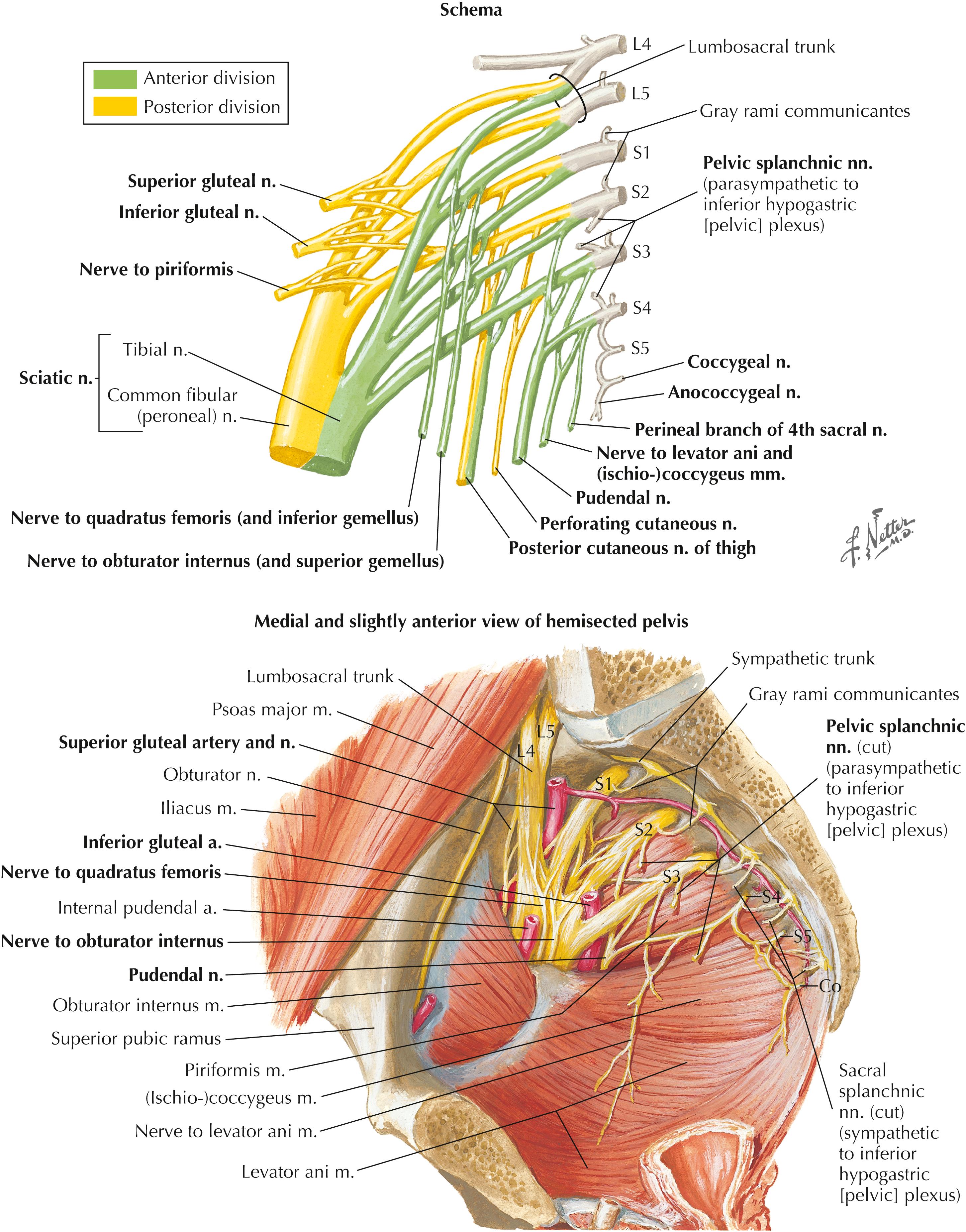
There has been considerable controversy surrounding the contribution of the sacroiliac joint in low back pain syndromes. Recent research suggests that the sacroiliac joint can be a contributor to low back pain and disability and can certainly be a primary source of pain. The concept of “sacroiliac joint dysfunction” is distinct from “sacroiliac joint pain” and is hypothetical at best. Sacroiliac joint dysfunction is usually defined as altered joint mobility and/or malalignment, neither of which have been consistently linked to low back or sacroiliac joint pain.
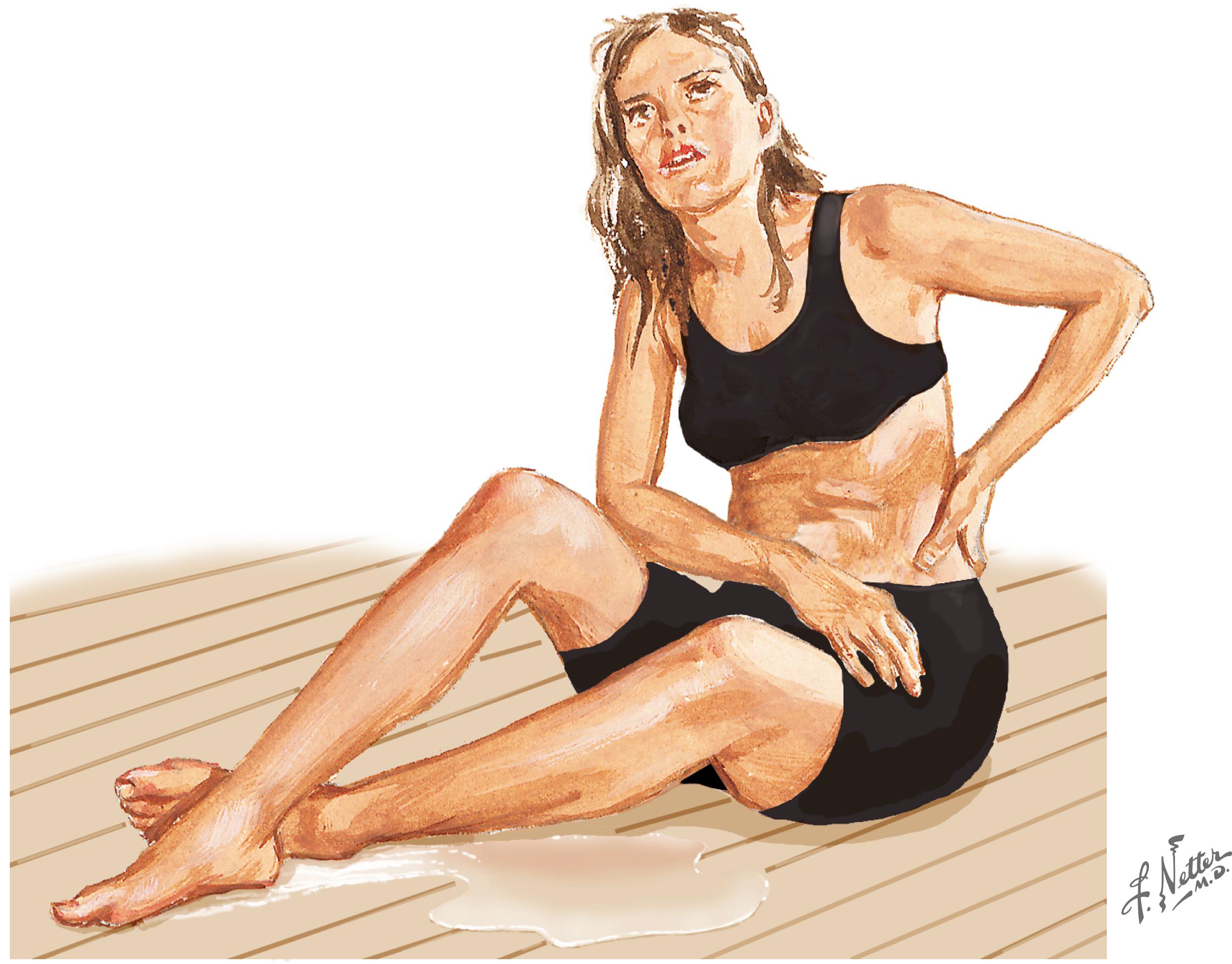
Dreyfuss and colleagues performed a prospective study to determine the diagnostic utility of both the history and physical examination in determining pain of sacroiliac origin. The diagnostic properties for the aggravating and easing factors and patient-reported location of pain are below.
| Question and Study Quality | Population | Reference Standard | Sens | Spec | +LR | −LR |
|---|---|---|---|---|---|---|
| Pain relieved by standing? |
85 consecutive patients with low back pain referred for sacroiliac joint blocks | 90% pain relief with injection of local anesthetics into sacroiliac joint | .07 | .98 | 3.5 | .95 |
| Pain relieved by walking? |
.13 | .77 | .57 | 1.13 | ||
| Pain relieved by sitting? |
.07 | .80 | .35 | 1.16 | ||
| Pain relieved by lying down? |
.53 | .49 | 1.04 | .96 | ||
| Coughing/sneezing aggravates symptoms? |
.45 | .47 | .85 | 1.17 | ||
| Bowel movements aggravate symptoms? |
.38 | .63 | 1.03 | .98 | ||
| Wearing heels/boots aggravates symptoms? |
.26 | .56 | .59 | 1.32 | ||
| Job activities aggravate symptoms? |
.20 | .74 | .77 | 1.08 | ||
| Pain aggravated by sitting in a chair? |
154 patients with low back pain | Unilateral buttock pain, positive Patrick or SIJ shear test, and at least 70% pain relief with analgesic SIJ injection | .65 (.45, .81) † | .62 (.53, .70) † | 1.69 (1.20, 2.38) † | .57 (.35, .94) † |
| Patient Report of Pain Location and Study Quality | Population | Reference Standard | Sens | Spec | +LR | −LR |
|---|---|---|---|---|---|---|
| Sacroiliac joint pain |
85 consecutive patients with low back pain referred for sacroiliac joint blocks | 90% pain relief with injection of local anesthetics into sacroiliac joint | .82 ∗ | .12 ∗ | .93 | 1.50 |
| Groin pain |
.26 ∗ | .63 ∗ | .70 | 1.17 | ||
| Buttock pain |
.78 ∗ | .18 ∗ | .95 | 1.22 | ||
| Points to posterior superior iliac spine (PSIS) as main area of pain |
.71 ∗ | .47 ∗ | 1.34 | .62 | ||
| Groin pain |
154 patients with low back pain | Unilateral buttock pain, positive Patrick or SIJ shear test, and at least 70% pain relief with analgesic SIJ injection | .39 (.22, .58) † | .78 (.70, .85) † | 1.76 (1.01, 3.07) † | .79 (.58, 1.05) † |
∗ Mean of chiropractor and physician sensitivity and specificity scores.
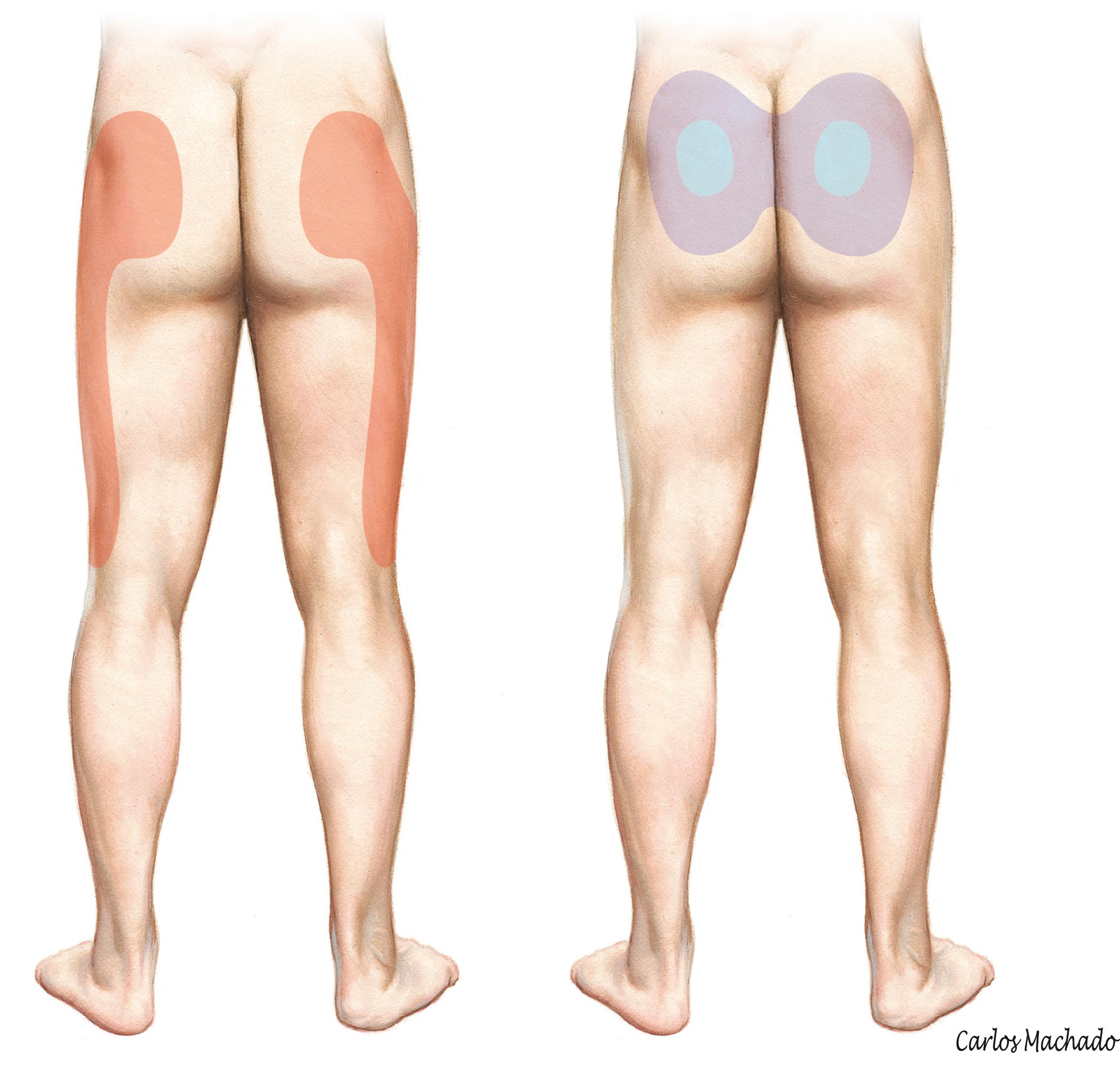
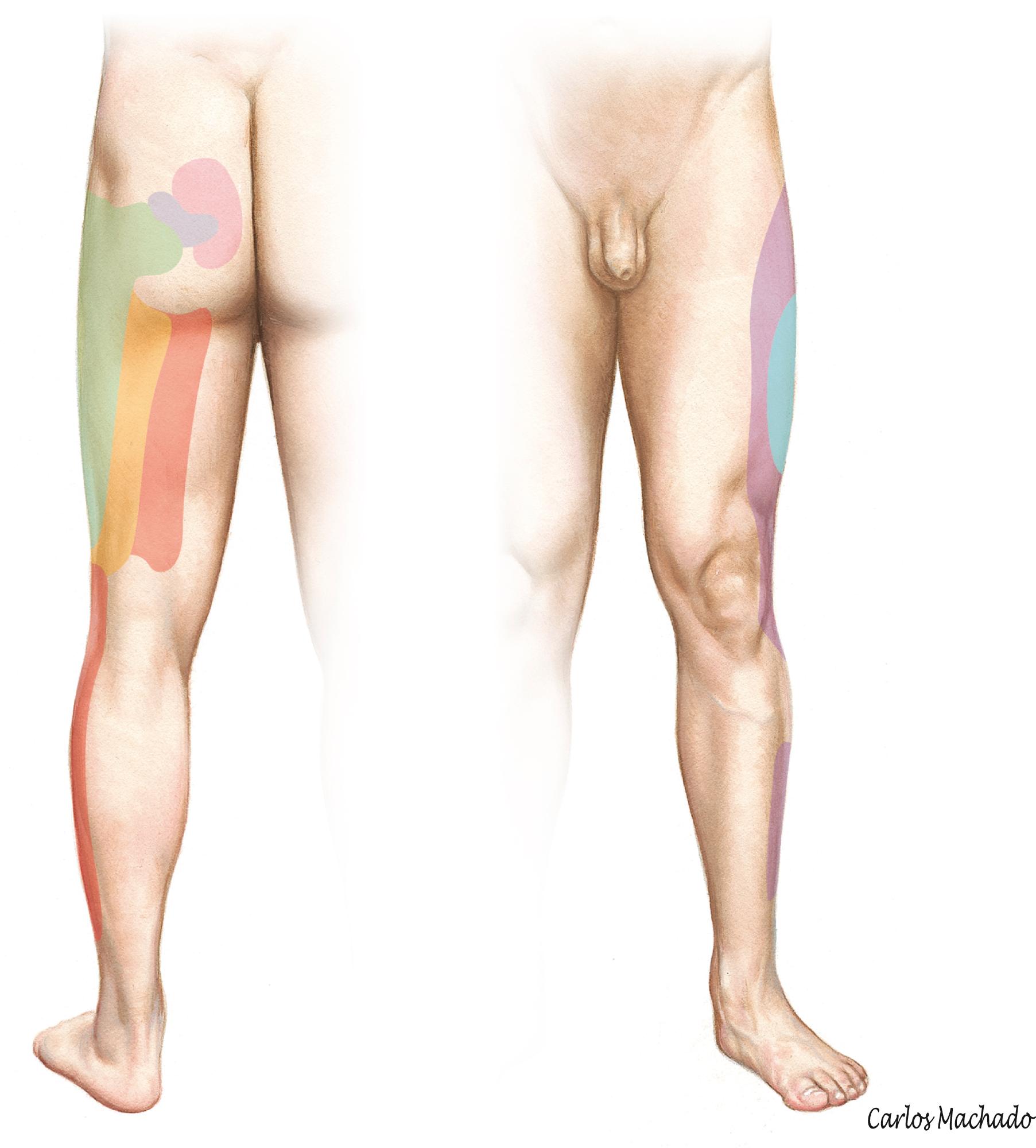
Become a Clinical Tree membership for Full access and enjoy Unlimited articles
If you are a member. Log in here